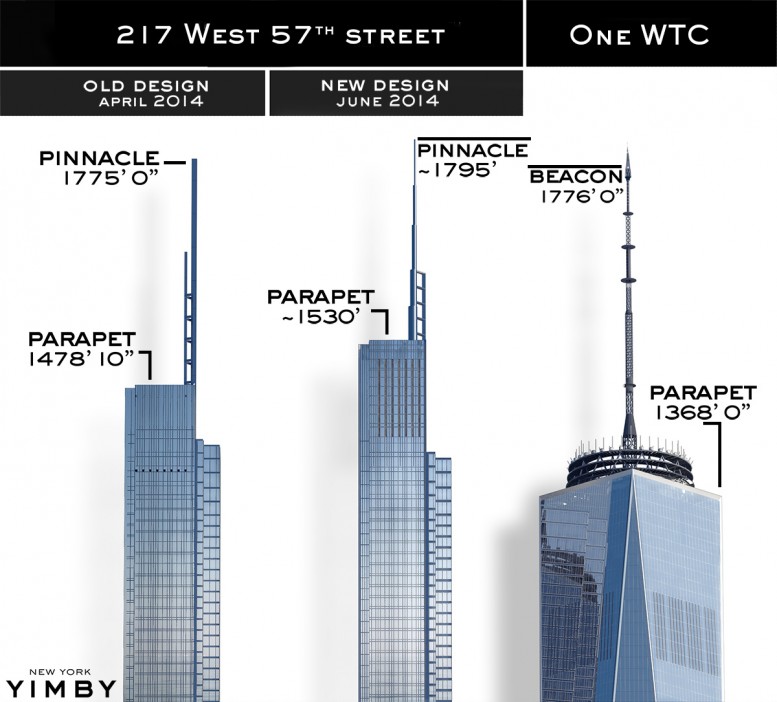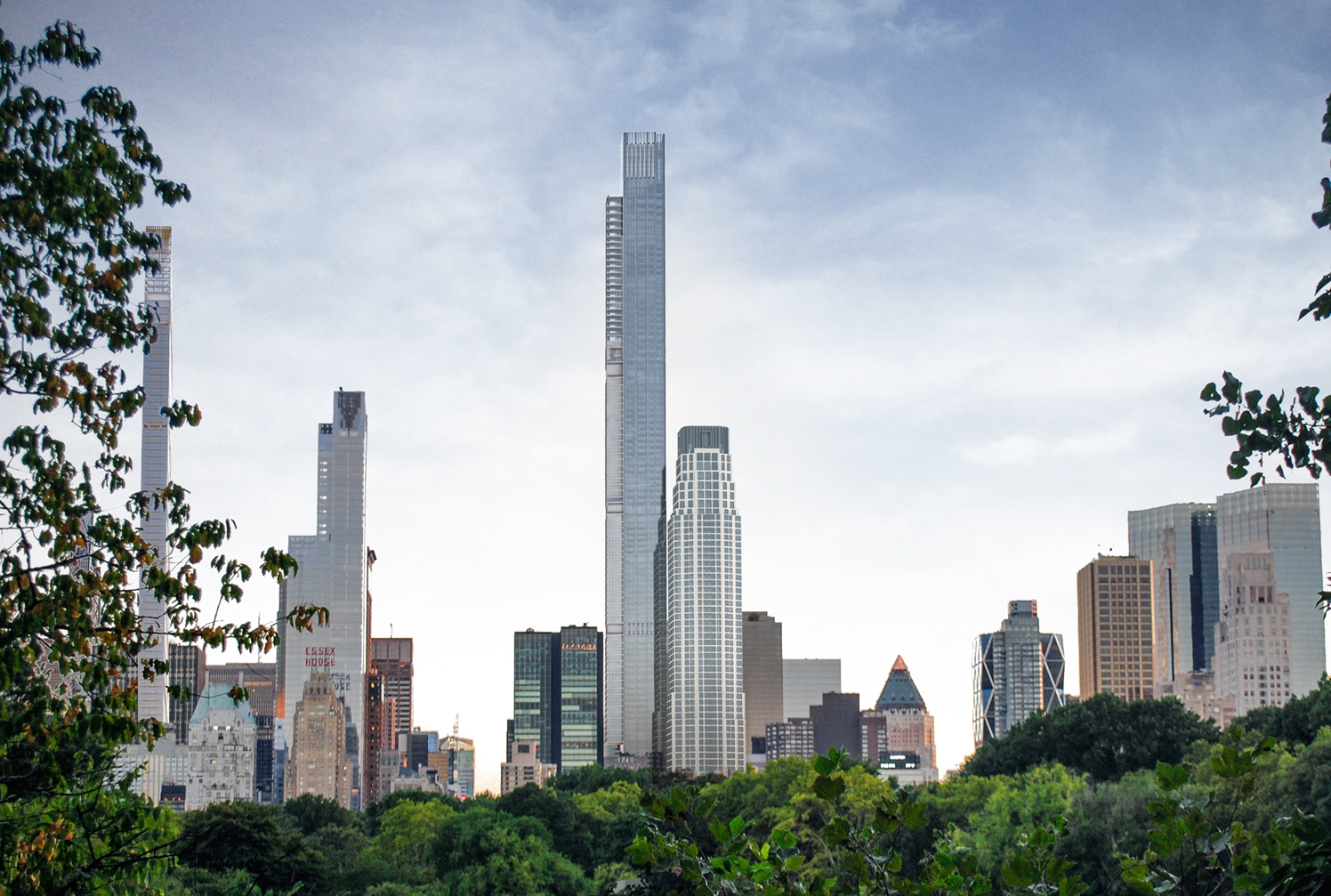The under-construction Central Park Tower apparently has taken the lead in the never-ending race to be the tallest building in New York City.
The website New York Yimby reports that Extell Development has tweaked its design plans and now will exclude a 245-foot spire at the top of Central Park Tower. Instead, the tower's roof height will gain 20 feet to 1,550 feet tall.
That would make the skinny, 99-floor, 1.3-million-sf Central Park Tower—located at 217 West 57th Street, whose completion is scheduled for 2019—182 feet taller than One World Trade Center’s roof level (One WTC also has a 408-foot-high beacon sitting atop its parapet.) Currently, the tallest building in the Western Hemisphere is the 1,450-foot-tall Willis Tower in Chicago.
Gary Barnett of Extell told the New York Post last Spring that his firm never intended for Central Park Tower to exceed the total height of One WTC. Still, since the Chrysler Building rose to 1,048 feet—a height abetted by a late-inning addition of a 185-foot-spire—on October 16, 1929, to become the world’s tallest building at the time, developers have competed to see how high buildings could reach into the skies.
Right now, the Burj Khalifa in Dubai holds that honor, at 2,722 feet, or 700 feet taller than its nearest rival.
New York developers and their architects have been particularly susceptible to skyscraper envy, especially lately as the city’s residential real estate market has exploded with ever-taller luxury residential towers springing up and targeting ultra-rich buyers and tenants, many of whom seem to be looking for the latest trophy rather than someplace permanent to live.
On its website, the Skyscraper Museum shows how heights of buildings in New York have escalated over the years, and how dramatically taller buildings have risen recently. The graphic and information include the Central Park Tower, with its preliminary design that had included the spire. The base of this building will include a 200,000-sf Nordstrom department store.

Related Stories
High-rise Construction | Nov 1, 2016
Winthrop Square will give rise to Boston’s second tallest building
The building will become the tallest residential tower in the city.
Building Team | Oct 31, 2016
The world’s 100 tallest buildings: Who owns and has developed the most?
All but four owners/developers on the list are located in the United Arab Emirates, China, or Hong Kong.
High-rise Construction | Oct 28, 2016
The world’s 100 tallest buildings: Which contractors have worked on the most?
Only one firm has worked on more than 10 of the world’s 100 tallest buildings.
High-rise Construction | Oct 27, 2016
The world’s 100 tallest buildings: Which MEP engineers have worked on the most?
The top firm worked on over three times as many of the tallest buildings as the second place firm on the list.
High-rise Construction | Oct 26, 2016
The world’s 100 tallest buildings: Which structural engineers have worked on the most?
The top firm has worked on almost one-fifth of the 100 tallest buildings in the world.
High-rise Construction | Oct 25, 2016
That sinking feeling: Millennium Tower San Francisco is beginning to worry residents with its sinking, leaning [Updated]
Residents are beginning to question if the tower, which exists in a major earthquake fault zone, is safe.
High-rise Construction | Oct 21, 2016
The world’s 100 tallest buildings: Which architects have designed the most?
Two firms stand well above the others when it comes to the number of tall buildings they have designed.
High-rise Construction | Oct 14, 2016
Perkins+Will-designed residential towers would transform the Seattle skyline
The towers thrive on ‘creative tension’ and lean farther away from each other the higher they climb.
Wood | Oct 13, 2016
Concept from Perkins+Will could become the world’s tallest timber tower
River Beech Tower is said to be a part of a masterplan along the Chicago River.
Resiliency | Oct 5, 2016
San Francisco’s 181 Fremont will become the most earthquake-resilient building on the West Coast
The building has achieved REDi Gold Rating, resilience-based design guidelines developed by Arup that establish a new benchmark for seismic construction.

















